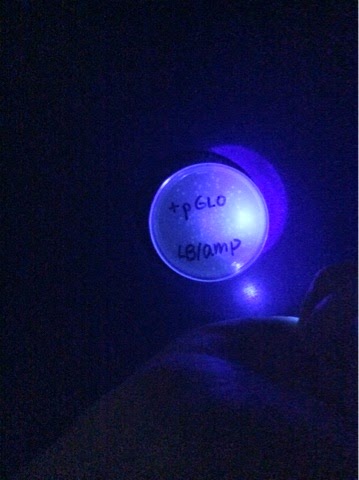Introduction:
Gel Electrophoresis often used in crime scenes and forscenics in order to compare two different sets of DNA. When the DNA is put into a gel electrophoresis, restriction enzymes are added to the a DNA sample so sciencetists are able to see where the those DNA fragments are compared to the DNA sample of either the criminal or victim. Restriction enzymes tend to cut up DNA into certain sections based on their nucleotide sequences and inside the cell they are usually made to break DNA Apart. In this situation, restriction enzymes are used to cut up a DNA sample to compare to another SNA sample. When adding the different restriction enzymes, you tend to add some idividually and some together with other restriction enzymes. Scientists do this because they want to find every possible way the DNA was spilt up so it can match a certain DNA fragment.
Procedure:
We pipetted samples of DNA cut with various restriction enzymes into the grooves of a gel. We put the gel into a machine that runs an electric current through the gel, because DNA is negatively charged and will move towards the positive end. We stopped the electric current after 45 minutes to prevent DNA from running off the gel. Larger fragments do not travel as far in the gel because they cannot fit as easily through the pores in the gel.
Here is what all the gels looked like after the electric current. Our gel is the middle gel in the bottom row.
After using the light and a marker, we made distinct lines of where the gels landed after the electric current.
Discussion: The results we got showed that restriction enzymes cut the DNA in a way so that many pieces of the DNA were the same as the model, showing that the negative DNA flowed properly from the negative pole of the gel to the positive side. In order to map the size of each fragment on the plasmid, we compare the length of the three lanes to the marker to understand roughly how many cuts and where the DNA underwent. Using PstI first, we saw that it had two fragments around 600 and 3300, and PSTI/ SSPI had three fragments at 600, 1500, and 1800. This means that the 600 length piece of DNA was never cut with the SSPI restriction enzyme, so it must have cut the longer piece of DNA into two, one slightly larger than the other. Similarly, the PSI/ HBAI gel cut the longer piece of DNA into two pieces, one much longer (at around 3000) and much shorter (around 300). Our gel was not as clear as other gels, so experimental error is at play in that certain lanes of the gel were not filled as much DNA as others. If all the lanes had an adequate amount of DNA, we might have been able to see our results more clearly.
Conclusion: we successfully learned how restriction enzymes work and mapping the restriction enzymes on a piece of circular DNA. By loading gel and seeing where the restriction enzymes had cut, we can compare the effects of certain restriction enzymes and use them to compare the similarities in DNA.











